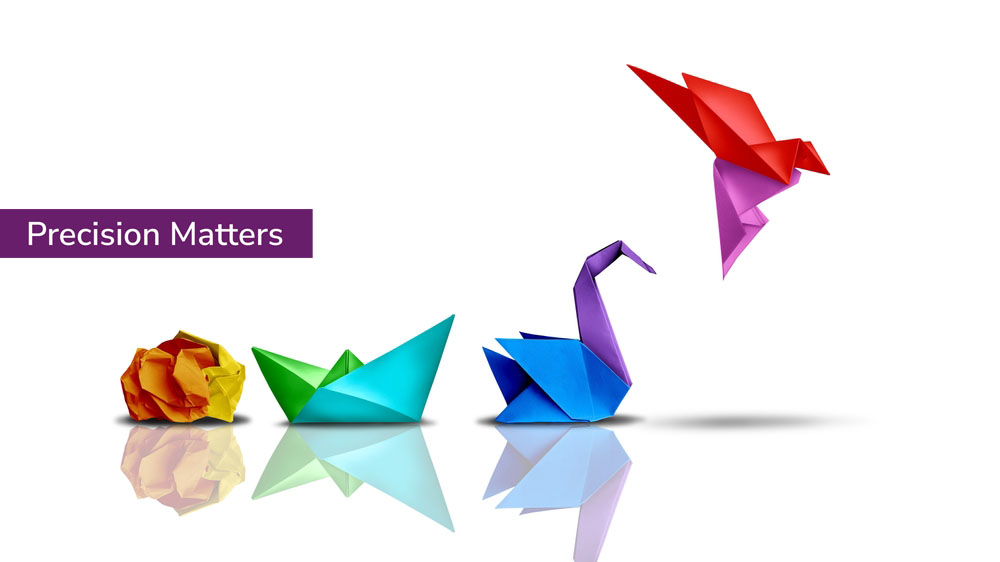
DEI Training
DEI training is valuable for both people and businesses, as it has a powerful impact on productivity, morale, and external relationships. DEI courses today span an enormous range of topics and can be customized to meet the specific needs of any organization. At the heart of an effective DEI program are the L&D courses that match the nature of DEI challenges within the company–and which ultimately deliver significant benefits to the bottom line.
What Is DEI Training?
Training for DEI (diversity, equity, and inclusion) initiatives is meant to increase acceptance of DEI concepts at all levels of a company. An HR department can hire according to DEI objectives. But in order to maximize the success of diversity training, companies need to ensure that diverse employees are properly welcomed and assisted. In turn, this requires successful DEI training and a supportive company culture. Let’s take a closer look at what makes a company diverse, equitable, and inclusive.
Diversity
Diversity literally means a “mix”. In terms of the content of DEI training programs, a diverse workforce contains a wide variety of both physical traits and personalities. This can include race, gender identity, nationalities, political preferences, religions, ethnicities, sexual orientations, physical abilities, and/or socioeconomic strata. One of the challenges of applying DEI in an organization is that it must establish diverse teams, i.e., that employee groups of all kinds are designed around a wide representation of workers.
Equity
Equity is the existence of impartiality, fairness, and justice in terms of policies and distribution of resources within an organization. In an equitable organization, outcomes are fair for everybody. Achieving this goal might require, for example, an HR team to prioritize certain types of candidates to arrive at the company’s diversity goals. Similarly, L&D training programs are another area that can require intervention. Those attending learning and development courses must be from groups that are under-represented in the role for which the training occurs. For instance, if a leadership team is not diverse enough, then the groups that need equitable representation should get priority for leadership development programs.
Inclusion
Inclusion is the degree to which diverse employees participate in development opportunities and decision-making processes within an organization. An inclusive environment is one where people feel safe, welcome, and have a sense of belonging. They should feel free to give their input and should never face negative sentiment from the group. To this end, many organizations have adopted DEIB initiatives, where the “B” means belonging. The idea of belonging is based on Maslow’s Hierarchy of Needs, the goal of which is self-actualization.
What an Inclusive Culture Looks Like
The addition of “belonging” to the DEI lexicon hints at a major challenge for successful DEI training, namely, an inclusive culture. To truly embrace diversity, it is not enough for HR teams to maintain diversity and equity in the organization. To make sure that employees feel as if they belong, workers at all levels must participate. Several types of activities can help with this:
- Taking time to introduce a new team member and allowing them a chance to talk about their background and professional goals
- During teamwork efforts, consulting with every employee to check if they have anything to contribute
- Being non-judgmental about opinions, failures, and performance by focusing on an employee’s positive role on the team
In a sense, “belonging” is an essential metric for an inclusive leadership team and DEI initiatives. If a company implements various DEI programs, but employees still don’t feel as if they belong, then L&D programs need to be changed.
The History of DEI Training
Diversity training has existed in various forms for many decades. Concepts such as exchange student programs, temporary postings to foreign corporate branches, and even language training are all based on the idea of diversity training. These initiatives were designed by schools, companies, and governments to teach people from one group about the ways of another as a means to improve communication and cultural understanding.
In the United States, the “birth” of DEI is seen as the civil rights movement. During the 1960s, laws were created that officially prohibited discrimination on the basis of race, color, religion, sex, or national origin. To avoid potential lawsuits originating from these laws, companies began to implement DEI training. Over time, movements for the rights of women, homosexuals, ethnic minorities, and other groups led to the growth of importance of social justice in many Western societies, with DEI becoming the expression of social justice in the business world.
During recent years, DEI has become a growth market. Around 2016, and with movements such as Black Lives Matter and #MeToo, DEI programs began to attract significant investments. The global market for diversity and inclusion is projected to increase from a value of USD 9.4 billion in 2022 to USD 24.3 billion in 2030, with a growth rate of about 12.6% per year.
Why Is DEI Training Important?
Companies participate in DEI by hiring and promoting diverse people of different backgrounds and including these people equally in vital organizational activities.
DEI training is also important when you consider the advantages it brings companies, such as:
External Relationships
DEI is desired both by society in general and investors in particular. Consumers tend to support brands that are seen as investing in social issues. Job seekers, especially younger ones, tend to want to work at companies with diversity programs. An effective DEI program can reduce unacceptable workplace behavior and resulting risks such as lawsuits and bad press. With DEI standards becoming a legal issue for some companies, many investors are requiring that firms set targets for diversity.
Morale
Younger generations in particular believe that corporate DEI sets a positive atmosphere in the workplace as it tends to encourage stronger social connections. According to Gartner, companies that focus on DEI can increase performance rates by 12% and employee retention by 20%. In addition, more than half of the employees surveyed by Pew Research believe that DEI at work is a positive thing. Finally, a Great Place to Work survey showed that various employee engagement factors increased as a result of DEIB, such as an interest in coming to work and liking the work environment.
Productivity
When HR takes a meaningful approach to DEI issues, organizations can achieve exceptional financial results. According to McKinsey, 39% of executive teams that feature a high level of gender diversity enjoy a greater chance of superior financial performance.
Why Does DEI Training Work?
Companies that see these benefits use successful DEI training to generate all kinds of positive impacts. Here are just a few:
Greater Acceptance of Viewpoints
One of the goals of DEI programs is to show workers that they harbor implicit biases, and, with this awareness in mind, help them change their way of thinking. This results in a higher level of respect towards the opinions of others, particularly those of contrasting DEI status. Such attitudes also allow those who would otherwise not be heard to openly express their ideas.
When this dynamic occurs in a group, it can lead to a much higher level of collaboration. After all, brainstorming is a classic technique for teamwork, and is optimized when everybody contributes. The effect of open mindedness is an increased capacity for problem-solving, creative thinking, and innovation.
Employee Wellbeing
Companies that meet a high level of diversity and inclusion build a feeling of belonging and psychological safety. Considering the high levels of stress that many employees are experiencing nowadays, DEI’s effect on mental health is an important plus. The empathy fostered by a DEI program makes workers feel valued for who they are, resulting in increased job satisfaction. DEI also encourages friendly relationships between employees, which increases social bonding and a feeling that the workplace is a second home.
A Higher Level of Communication
People from different DEI perspectives are influenced by a variety of experiences. This often shapes the way they think and communicate. A successful DEI program allows the team to benefit from different styles of thinking. It also enriches the ability of the group as a whole as it learns to tackle issues from a cross-cultural perspective.
Attracting Talent
As mentioned above, a majority of people who are looking for work prefer organizations with diversity programs. But this trend has another benefit, namely, that DEI programs attract diverse talents. This can deliver the following advantages:
- A “snowball” effect where new hires from diverse groups inform their friends about opportunities, leading to an even greater number of diverse job candidates
- A critical mass of change in company culture that is more likely to accept a strong DEI-oriented workplace
Greater Abilities in the International Market
Diverse organizations build teams that have a wider understanding of a global clientele. Companies with successful DEI programs equip employees to:
- Understand cultural differences and nuances
- Adjust products according to local culture
- Communicate more effectively on all levels (marketing, advertising, customer service, and negotiations) with foreign partners, governments, and customers
Types of DEI Training
DEI programs occur on two basic levels – employee training courses and strategic, organization-wide learning.
For employees, common DEI courses include:
Unconscious Bias Training
This involves making individuals aware of prejudices that they were not fully cognizant of, and teaching them how to adopt non-judgmental attitudes towards the DEI community. It is important for employees to understand why they have a bias, practice exercises to eliminate it, and hopefully converse with people who are the subject of their prejudice.
Microaggressions
Related to unconscious biases are microaggressions, which describes language, actions, and attitudes that are insulting to marginalized communities. Microaggressions are often unintentional and result from problems such as structural racism and racial privilege. It is often the case that the person who commits a microaggression is not even aware that they are doing so. Training in microaggressions involves awareness and pre-emption.
Anti-racism
Employees need to take an active role in combating racism. Anti-racism training teaches people how to move out of their comfort zone and confront harassment and discrimination, even when they are not directly involved. On an individual level, employees can engage in anti-racism by acknowledging how they have benefitted from structural racism and white privilege.
Allyship
“Allies” are employees from privileged groups who support people from marginalized groups. Allyship training gives allies the skills they need to understand when and how to help. A common step for those participating in allyship is to advocate for people who are disadvantaged as a means of forming a group with a common cause.
Hiring and Promotion Awareness
DEI communities are by nature disadvantaged, and the unconscious bias that many have towards them means that marginalized people need a step up when it comes to their careers. To ensure that disadvantaged people get the opportunities that they deserve, managers and HR staffers often need to reset their attitudes.
Skills Related to DEI
There are specific workplace soft skills that make it easier for employees to understand DEI training topics. For example, unconscious bias training requires self-awareness, among other abilities. In a 2022 survey, RedThread Research examined which abilities are used by employees to ensure successful DEI initiatives. They segmented their findings according to hierarchical level. Here are some of the skills that are essential for enabling DEI training programs:
Across the Organization
Essential DEI skills include risk-taking and nonverbal communication. In turn:
- Risk-taking depends on critical thinking and self-confidence
- Non-verbal communication demands self-awareness and active listening
For Managers
Both senior and mid-level managers must be prepared to:
- Challenge the status quo, which involves adaptability and change management skills
- Persuade stakeholders, meaning strong presentational communication skills
For Employees Below the Executive Level:
- Envisioning a different future, an ability that is complemented by creative thinking
- Influence, a skill based on communication and empathy
For HR teams, knowing which skills support DEI is vital. In addition to direct DEI topics (anti-racism, microaggressions, etc.), it’s important to equip employees with these soft skills. A skills gap analysis will determine if an employee already has a certain level of skill, or if they should be sent to an L&D course to boost a particular ability.
Luckily, there is no downside to training employees for these skills. Many of them will be found in top soft skills lists across the industry. For example, Forbes cites the top five soft skills for 2024 as communication, teamwork, creativity, adaptability, and problem-solving. In some ways, even without a need to implement DEI programs, such soft skills are necessary in any case.
Creating a DEI Program
DEI programs are not like other L&D initiatives. The courses themselves should be designed around the concept of diversity and inclusion. Employee input is central to making people feel heard, and so the HR team should prepare a course design system that includes various roles for participants.
DEI Subjects
In terms of content, there are many interconnected options for determining the subjects of a DEI program:
- Classic DEI topics as listed above
- Courses that move the company towards meeting the goals set out in a DEI statement
- Employee suggestions
Diversity Audits
Once you have a general idea of the kinds of courses that will be part of a DEI program, it’s time to see where the organization stands. A diversity audit is in some ways like a skills gap analysis because it identifies gaps in DEI targets. It is meant to accomplish a few things:
- Set out what kinds of diversity categories (gender, race, etc.) will be analyzed and what the targets are in different departments. A very simple example is women vs. men. Because women are universally about 50% of the population, many organizations aim to have that level of representation in all departments and in the board of directors as well.
- Examine actual levels of diversity. This is a complex process because employees may self-identify in numerous categories. It might also be a sensitive step because it can touch on an employee’s personal life. To this end, you should consider providing an option for participants to remain anonymous.
- Analyze pay gaps. A major DEI issue is a difference in salaries between people of different DEI groups. The gender pay gap is well known, but you should also look into salary discrimination based on race, sexuality, and other factors.
How you go about conducting a diversity audit is important. Make sure to include members of all levels of the organization and from different DEI groups. Promote participation in the audit through a number of communication channels. Finally, provide numerous data collection methods in order to get a full picture, such as surveys, focus groups, and diversity scorecards.
Course Design
At this point, deciding on DEI subject priorities is simple. Just compare the gaps revealed by the diversity audit with your draft list of DEI subjects to see where they overlap. Then, implement the resulting courses. Here are a few considerations for this stage:
There are hundreds of diversity training experts out there. Finding the best ones, based on their area of expertise and approval ratings, can be managed through a talent development platform.
Like many L&D courses, employees want options. In cooperation with a DEI expert who is teaching your courses, try to provide opportunities for microlessons, gamification, and mobile learning.
It’s difficult to have a truly diverse, equitable, and inclusive organization. In some cases, employees will need extensive training that counters years of bias. Companies also have a constant turnover of workers, each of whom will need to undergo DEI training. For such reasons, you’ll want to design DEI initiatives as a type of continuous development program for all organizational levels, and include them as part of onboarding.
Feedback
Like any L&D program, DEI initiatives should be evaluated, starting with employee feedback. Employees at all levels should be able to:
- Comment on the effectiveness of DEI courses
- Discuss improvements in the workplace
- Provide suggestions on how to improve
You should invest effort in a DEI feedback mechanism as it will (most likely) be part of a continuous development program (as discussed above).
Getting Everyone on Board with DEI
Courses like those listed above address individual knowledge levels, but for DEI training to be truly effective, it requires a holistic approach. Understanding the commitments necessary for a meaningful DEI initiative in itself requires instruction from professionals in this field.
Because DEI is a complex issue, companies need a common language as a framework for discussion. There are many barriers that affect marginalized communities of which privileged employees are not aware, so intensive education is required.
This translates to courses that are inclusive and accessible, while being supported by management to ensure participation. Just as any L&D program requires resource allocation in terms of time and funding, so too DEI training courses call for proper scheduling and learning materials.
Management has other responsibilities as well. Leaders require specialized DEI-centered communications courses to turn them into role models. In addition, HR and management must work together to implement comprehensive DEI actions such as incorporating diversity principles into onboarding, talent development programs, and reward structures. A high-level DEI coach should be able to provide training regarding all of these issues.
Growthspace – Diversity of Expertise, Not of Quality
The increasing prevalence of DEI training has filled the industry to bursting with instructors at all levels of skill. Growthspace helps organizations sift through the chaos, matching their specific DEI requirements with the very best experts in the field. With a scalable, technology-based solution, Growthspace enables organizations to hire the right trainers, mentors, and coaches for their personalized needs to maximize the quality of DEI initiatives.


